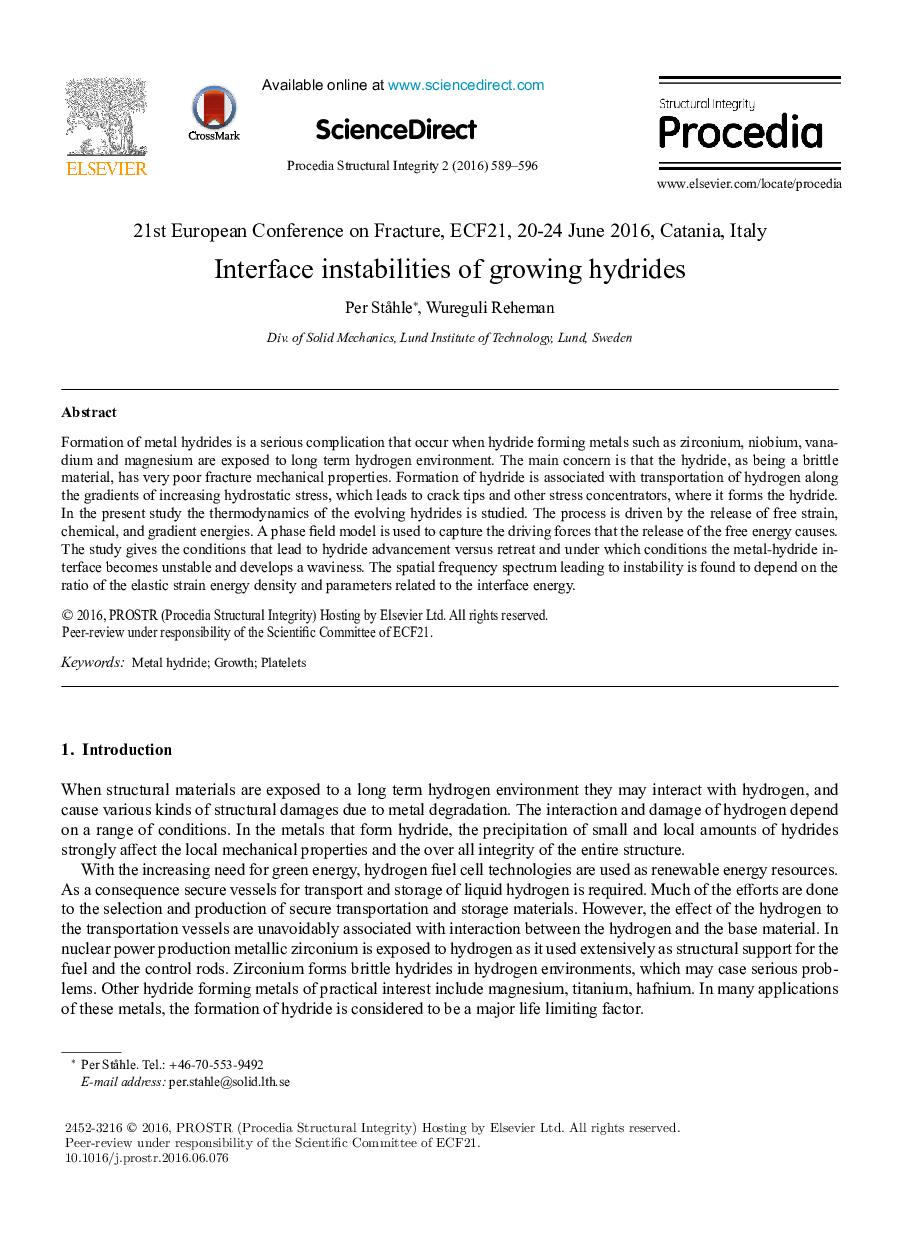| Article ID | Journal | Published Year | Pages | File Type |
|---|---|---|---|---|
| 1558717 | Procedia Structural Integrity | 2016 | 8 Pages |
Formation of metal hydrides is a serious complication that occur when hydride forming metals such as zirconium, niobium, vanadium and magnesium are exposed to long term hydrogen environment. The main concern is that the hydride, as being a brittle material, has very poor fracture mechanical properties. Formation of hydride is associated with transportation of hydrogen along the gradients of increasing hydrostatic stress, which leads to crack tips and other stress concentrators, where it forms the hydride. In the present study the thermodynamics of the evolving hydrides is studied. The process is driven by the release of free strain, chemical, and gradient energies. A phase field model is used to capture the driving forces that the release of the free energy causes. The study gives the conditions that lead to hydride advancement versus retreat and under which conditions the metal-hydride interface becomes unstable and develops a waviness. The spatial frequency spectrum leading to instability is found to depend on the ratio of the elastic strain energy density and parameters related to the interface energy.
